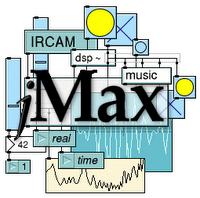The TAKFAV Project is conceived to explore a poetic communication rapport between man and plants.
The Artist Formerly Known As Vanda
The project entails building a poetic communication process between a vegetable organism and man. The scheme used can be described thus: Sensors able to detect bioenergetic fields – electric conductivity1, photosynthesis and other properties – that plants produce are applied around Vanda.
1The plant's electric circuit: an increase in counter-EMF is proportional to an increase in current. A capacitor is part of a polarization circuit [P] - a capacitor in series with a resistor. The capacitance and resistance of the polarization element vary with frequency such that the ratio of reactance to resistance remains constant. If the capacitance of the plant tissue is static, and the current low, very little counter-EMF is generated and essentially is not seen during the measurement. The static capacitance will behave as purely ohmic resistance. At higher currents of conductance, a charge of capacitance builds up and resistance increases, as seen by the indicator drop.

fig. 10 psychogalvanometer
These sensors transmit the energy variations to a transponder that in turn communicates with a synthesizer that transforms these modulations into musical signs. An electronic musician then codifies these musical signs arbitrarily, in forms of harmonies, reverberations and so forth, in a way that each sound-form can be associated with a particular state or experience of Vanda.
www.arduino.cc

Fig. 12 Mini Mac

fig. 13 Belkin Pure AV Digital Optical Cable

fig. 14 Max./MSP
It is the “farmer,” i.e. the person taking care of the plant, who will thanks to experience be able to associate the various sounds with what Wanda is doing or, as it were, saying.
This setup is then completed when the plant’s sensors also pick up the energy fields of the approaching human. This poetic hybridization should generate sounds that can be interpreted as a true dialogue between the plant and the “cultivator.” And, once again, understanding what constitutes harmony will require an accumulation of experience, leading to an ability to relate certain sounds to certain physiological states of both the plant and the person.
In 1998, a direct descendant of Max/FTS was developed in Java (jMax) and released as open-source.

fig.15 Logitech Z-5500 5.1 THX Speaker System
TAFKAV may be described as a poetic installation permitting a preliminary form of communication between the plants and humans.
This communication has to be understood hermeneutically, as the relationship between the participants is dynamic and our understanding of the whole can only be arrived at by reference to the parts, and our understanding of the parts by reference to the whole.
As neither the whole nor any individual part can be understood without reference to another, the process is a circle.
However, as noted at the beginning, that does not mean that it is impossible to interpret.








Nessun commento:
Posta un commento